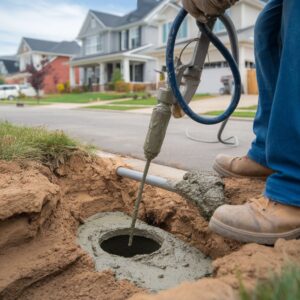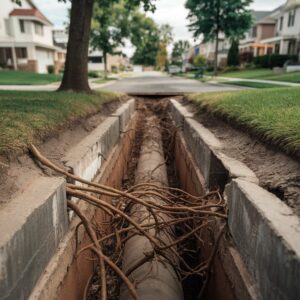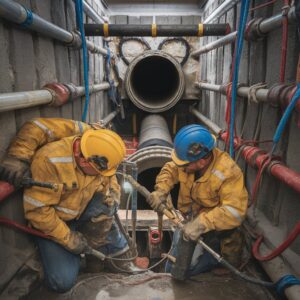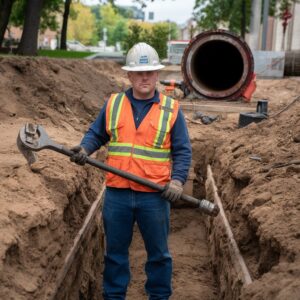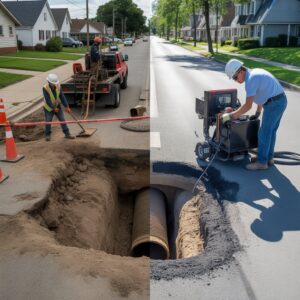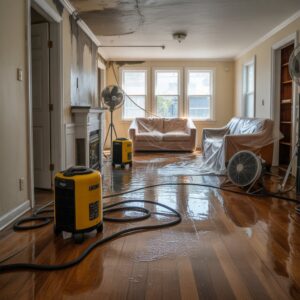A sewer inspection for home buyers usually takes 30 minutes to one hour. This process extensively analyzes the property’s sewer infrastructure, identifying issues such as blockages or structural defects and potential sewer repair needs. Factors like the sewer line’s length, condition, and access points affect the duration. Understanding these aspects is essential for making informed purchasing decisions and negotiating repairs. A detailed review offers peace of mind by elucidating potential sewer-related challenges within the property.
Key Takeaways
- A typical sewer inspection takes between 30 minutes and one hour to complete.
- The duration is shorter than a standard home inspection, which lasts 2 to 4 hours.
- Factors like the sewer line’s length and condition can affect inspection time.
- Accessibility of entry points may influence the time required for the inspection.
- A sewer inspection is a non-invasive process using a camera to assess sewer lines.
Why Is a Sewer Inspection Important When Buying a Home?
A sewer inspection is a critical component of home-buying, providing a detailed assessment of the property’s sewage infrastructure, and identifying issues like blockages or the need for sewer line repair.
This inspection typically includes an evaluation by a home inspector who utilizes specialized cameras to identify blockages, leaks, or potential structural issues within the sewer lines.
Homeowners benefit from this process by gaining peace of mind, as it helps prevent future sewage problems that can lead to costly repairs and potential health hazards from leaks.
What’s Included in a Sewer Line Inspection by a Licensed Plumber?
When considering the purchase of a home, conducting a sewer line inspection is vital, as it provides insights into the condition of the property’s underground plumbing.
A home inspector typically performs a detailed sewer inspection using a camera inspection method. This inspection involves inserting a specialized video camera into the main sewer line to identify potential issues.
The camera inspection reveals pipe blockages, sewer problems, or structural defects. Video inspection enables the home inspector to assess the sewer line’s condition without invasive measures.
Why do homeowners need a sewer inspection for peace of mind?
Although often overlooked, sewer inspections offer homeowners significant peace of mind by ensuring the integrity of a property’s plumbing system.
When buying a home, a thorough home inspection should include a sewer line inspection, which is vital for evaluating the condition of your home’s sewer system.
Inspectors can visually examine the sewer lines for potential issues such as blockages, cracks, or tree root intrusion using a sewer scope with a camera attached.
Spotting these issues early can help avoid expensive repairs and unforeseen disruptions.
By understanding the state of the sewer system, prospective homeowners can make informed decisions, negotiate necessary repairs, or reconsider their purchase.
Ultimately, this inspection provides confidence that the property’s plumbing infrastructure is sound and reliable.
How does a sewer system problem affect sewage and leaks?
Even minor issues within a sewer system can escalate into significant problems affecting both sewage management and the potential for leaks. A crack in a sewer pipe or a damaged sewer line can lead to sewage leaks and environmental hazards. Root intrusion, often caused by tree roots seeking moisture, exacerbates these issues, causing blockages and slow drains. Shifting soil may further misalign sewer lines, intensifying the risk of costly repairs. The following table illustrates common causes and their impacts:
| Cause | Impact |
|---|---|
| Crack in the pipe | Sewage leaks |
| Root intrusion | Blockages, and slow drains |
| Shifting soil | Misaligned sewer lines |
Understanding these factors underscores the critical importance of a thorough sewer inspection when buying a home.
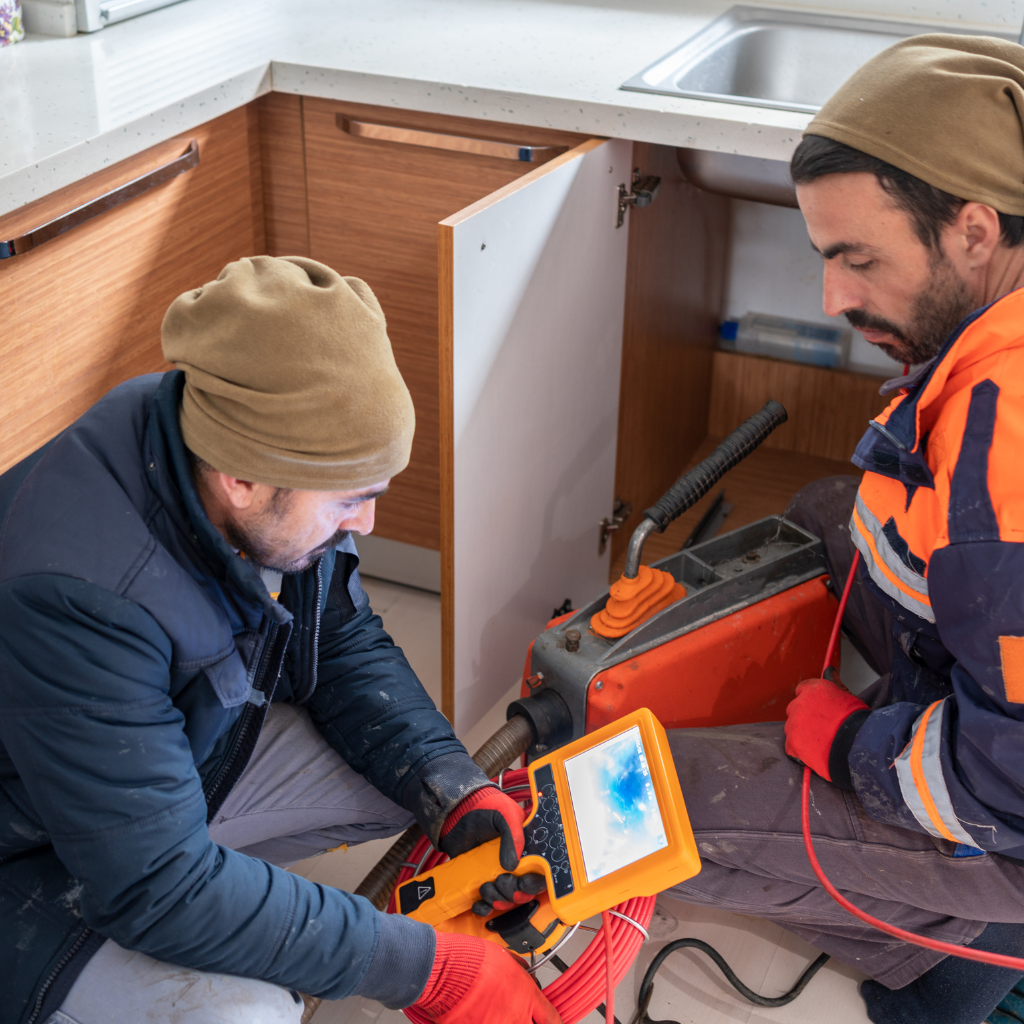
How Long Does a Sewer Scope Inspection Typically Take?
A sewer scope inspection typically takes less time than a full home inspection and can usually be completed within an hour.
This process involves using a specialized camera to identify potential issues such as blockages, pipe damage, or root intrusion in the sewer line, all of which may indicate the need for trenchless sewer repair in some cases.
Factors such as the length and condition of the sewer line, as well as the accessibility of entry points, can influence the duration of the inspection.
What can a sewer camera inspection find during the process?
During a sewer camera inspection, the process can uncover various issues within the sewer lines that may not be immediately visible through other methods. The inspection involves inserting a sewer camera into the underground sewer system to identify potential problems.
Typical findings include clogs, which can impede water flow, and corrosion, particularly in clay or cast iron pipes, which can lead to structural weaknesses. The inspection findings are critical in determining the sewer line’s condition, revealing cracks or misalignments that might otherwise go unnoticed.
For those involved in home buying, understanding these issues is vital before buying a home, as they can greatly impact repair costs and future maintenance. Conducting such an inspection guarantees informed decision-making when purchasing a property.
How long does a sewer inspection take compared to a regular home inspection?
Understanding the potential issues identified during a sewer camera inspection naturally leads to questions about the inspection’s duration, especially when compared to a regular home inspection.
A sewer scope inspection typically takes around 30 minutes to one hour, depending on the complexity of the plumbing system. This is considerably shorter than a standard home inspection, which generally lasts two to four hours.
When scheduling a sewer inspection, the time required can vary based on the property’s age and condition. A sewer inspector utilizes specialized equipment to perform a sewer inspection efficiently.
In contrast, a standard home inspection covers a broader range of elements, extending the duration. While the sewer inspection cost is typically lower, its precise nature guarantees focused assessment of potential subterranean issues.
What factors make an inspection take longer or shorter?
The length of a sewer scope inspection can vary depending on several factors; the complexity of the plumbing system is often a primary determinant.
A sewer video inspection involves a camera attached to a long, flexible rod, inserted into the sewer line through an access point. The inspection time can vary based on several elements:
- Length and Condition of the Sewer Line: Longer or older lines may require more inspection time.
- Access Point Availability: Easily accessible entry points can expedite the process, while difficult access points can prolong it.
- Scope of Inspection Service: Thorough inspections may take longer but provide detailed insights into potential issues.
The overall time can impact the cost of a sewer inspection, affecting home buyers’ decisions.
What Does an Inspector Look for in a Sewer Line Inspection?
During a sewer line inspection, the inspector employs a camera to meticulously examine the interior of the pipes, identifying leaks and structural damage.
This process allows the inspector to pinpoint common issues such as root intrusions, pipe misalignments, and blockages, which homeowners should know.
How does the inspector check the sewer line for leaks and damage?
Inspectors employ a systematic approach to examine sewer lines for leaks and damage, utilizing specialized equipment to guarantee thorough evaluation.
A sewer inspection will take a methodical process to identify all potential issues. The inspector checks the sewer line for integrity, focusing on several key aspects:
- Sewer Scope Inspection: An small camera is placed inside the sewer line to visually check for leaks, blockages, or structural damage in materials such as cast iron.
- Pressure Testing: This involves evaluating the system’s ability to hold pressure and identifying any leaks that might not be visible.
These techniques help guarantee that potential homebuyers can confidently address any sewer concerns.
What common inspection findings should homeowners be aware of?
Following the systematic approach of inspecting sewer lines for integrity, it is essential to understand the common issues that inspectors often encounter. During an inspection when buying, identifying problems such as blockages, root intrusions, and pipe collapses is crucial. A thorough sewer line inspection reveals these issues, which are significant for a homeowner. Early detection can save you thousands in future sewer repairs. Furthermore, the inspection also aids in negotiating with the seller, potentially adjusting the cost of a sewer replacement or repairs.
| Common Issue | Description | Potential Impact |
|---|---|---|
| Blockages | Debris buildup in pipes | Sluggish drainage |
| Root Intrusions | Tree roots invading pipes | Pipe cracking |
| Pipe Collapses | Structural failure of pipes | Major sewer repairs |
As a result, getting a sewer inspection is essential for informed decision-making.
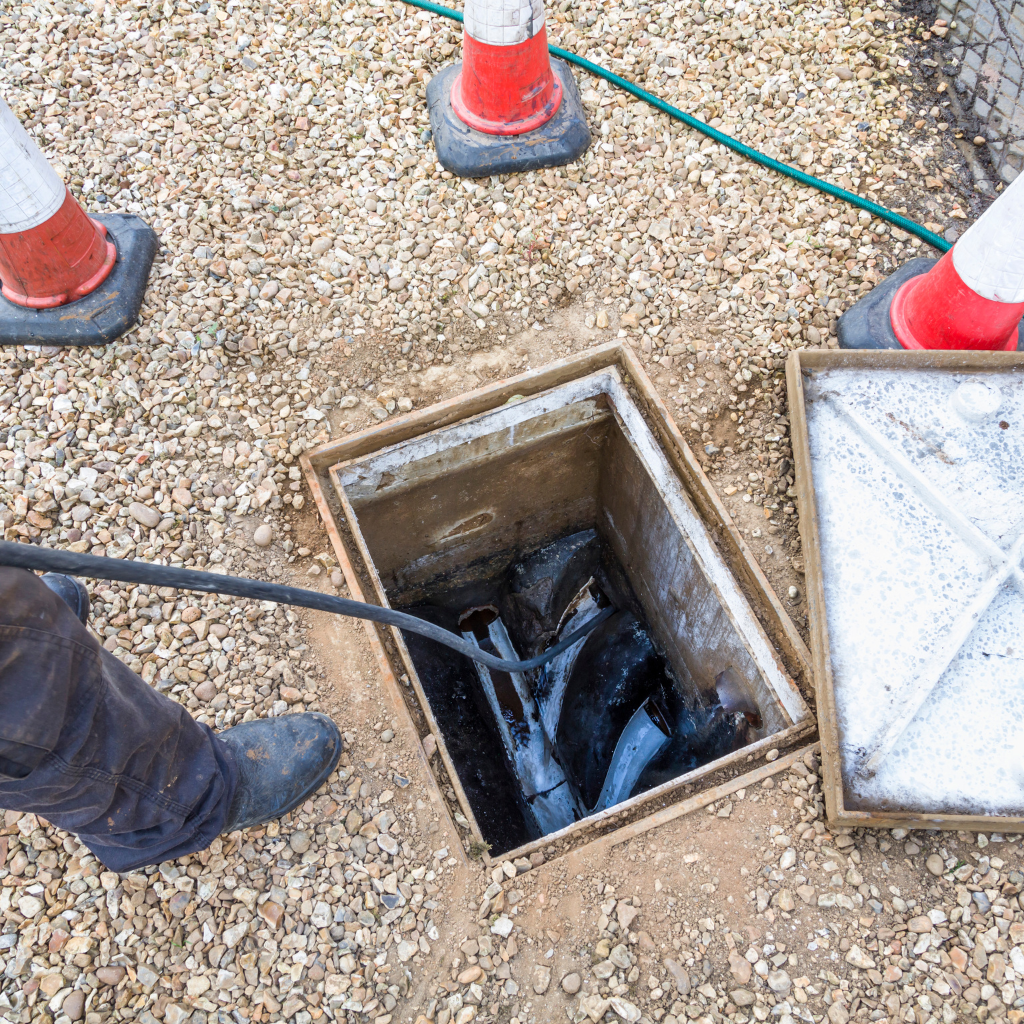
How Much Does a Sewer Inspection Cost for Home Buyers?
The cost of a sewer inspection for home buyers can vary based on several factors, including the length and complexity of the sewer line and regional pricing differences.
Typically, the cost is separate from a standard home inspection, necessitating additional budgeting for prospective buyers.
Opting for a sewer inspection is prudent even without visible leaks, as it can uncover hidden issues that may lead to costly repairs if left unaddressed.
What affects the inspection cost of a sewer camera inspection?
Various factors influence the cost of a sewer camera inspection, which is essential for home buyers concerned about the condition of their prospective property’s plumbing system.
A sewer inspection might generally cost anywhere from $100 to $500, but several elements can affect this range.
Key considerations include:
- Sewer Line Length and Complexity: Longer or more intricate sewer lines require more time and equipment, increasing costs.
- Connection or Septic Tank: Properties with a septic tank or complex connection might incur additional expenses due to specialized evaluation needs.
- Accessibility of Cleanout Points: If cleanout points are difficult to access, this can prolong the inspection process and increase costs.
Scheduling your sewer inspection allows you to address potential issues that often get overlooked, especially if you own a home.
Is the sewer inspection cost separate from a home inspection?
When considering the costs associated with purchasing a home, many prospective buyers may wonder whether the expense of a sewer inspection is included in the standard home inspection. Generally, a sewer inspection is separate from a typical home inspection due to the specialized nature of evaluating sewer lines and the unique plumbing challenges they present. This is due to the specialized nature required to assess the condition of sewer lines, especially when buying a new home. Conducting a sewer inspection today is often recommended, particularly for properties older than 20 years, as problems may lie beneath the surface.
| Inspection Type | Typical Cost Range | Purpose |
|---|---|---|
| Home Inspection | $300 – $500 | General property evaluation |
| Sewer Inspection | $150 – $300 | Assess sewer line condition |
| Combined Inspections | Varies | Thorough evaluation |
Being aware of these costs helps buyers make well-informed decisions.
Why is it smart to get a sewer inspection without a visible leak?
Even without a visible leak, obtaining a sewer inspection remains prudent for home buyers. A sewer line beneath a potential new home could harbor hidden issues that, if left unchecked, might take longer to address and result in costly repairs.
Here’s why a sewer inspection is critical:
- Preventive Insight: Identifying problems early guarantees they do not escalate, potentially saving substantial repair costs.
- Unseen Damages: Sewer lines can suffer from root intrusion, corrosion, or blockages, which are not visible but need a sewer inspection to uncover.
- Informed Decisions: Knowing the sewer’s condition allows buyers to negotiate repairs or adjust offers, avoiding unexpected expenses later.
Without due diligence, buying a new home could cost more than anticipated.
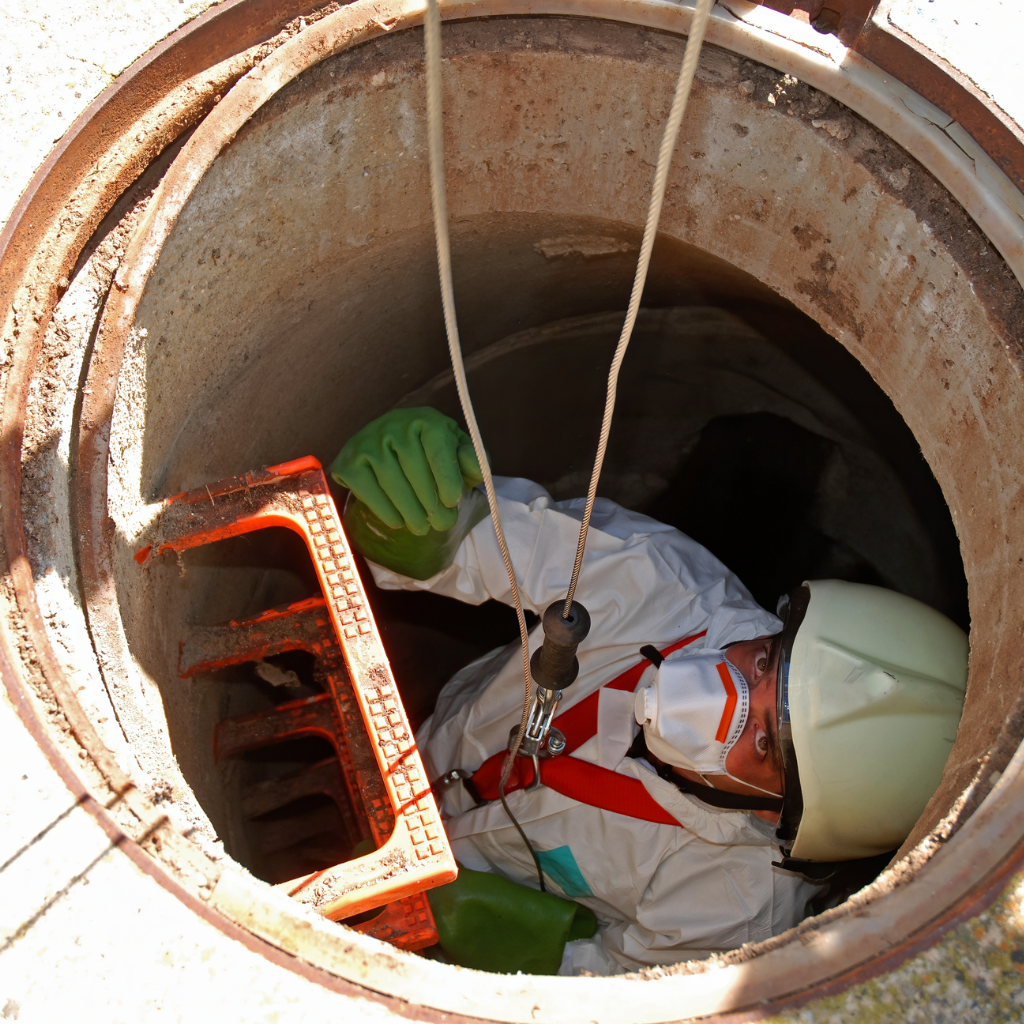
When Should You Get a Sewer Inspection Before Buying a Home?
Before making an offer on a property, a sewer inspection is essential before buying a home, as it can provide vital insights into the condition of the home’s plumbing system, potentially preventing unforeseen expenses.
We recommend a sewer inspection because discovering sewage issues after the purchase may lead to costly repairs and legal complications. A typical sewer inspection takes around 1–2 hours, depending on the property’s size, to ensure the sewer line is inspected thoroughly. Often, what gets overlooked is the sewer in older homes, making a proper evaluation critical.
A sewer scope inspection helps identify blockages, cracks, or damage early, ensuring long-term peace of mind and safeguarding significant financial investments.
Do you need a sewer inspection before making an offer?
While purchasing a home can be exciting, prospective buyers must methodically consider the condition of the property’s infrastructure, particularly the sewer system, before making an offer.
A pre-offer sewer inspection can help identify potential concerns that might not be visible during a general home inspection. Here are three reasons why a sewer inspection is advisable before making an offer:
- Avoid Unexpected Repairs: Identifying issues early can prevent costly repairs that may arise shortly after purchase.
- Negotiation Leverage: Discovering sewer problems before making an offer can give buyers leverage to negotiate repair costs or a lower purchase price.
- Informed Decision-Making: A sewer inspection guarantees buyers have thorough knowledge of the property’s condition, enabling them to make more informed purchasing decisions.
What happens if the inspection finds sewage issues after buying?
If a sewer inspection uncovers issues after purchasing a home, buyers may face unexpected challenges that require prompt attention and resolution.
Initially, they should assess the extent and severity of the sewage issues, often necessitating consultation with a licensed plumber or sewer specialist. Costs could range from minor repairs to extensive system replacements, affecting financial planning.
Preventive maintenance is vital to avoid exacerbating the situation. Timely addressing the problems not only safeguards the property value and guarantees a healthy living environment, but also minimizes potential future disruptions and costs.
Why is an inspection essential for long-term peace of mind when buying a home?
A sewer inspection is essential to home-buying, safeguarding against unforeseen complications from undetected sewage issues.
It provides prospective homeowners with critical insights into the property’s sewer system, ensuring long-term peace of mind. The inspection identifies potential problems that may not be evident during a standard home inspection.
Consider the following reasons why it is crucial:
- Cost Savings: Early detection of sewer issues can prevent costly repairs later, saving homeowners significant money.
- Health and Safety: Identifying and addressing sewage problems can prevent health hazards caused by leaks or contamination.
- Property Value: A well-maintained sewer system can enhance the property’s value, making it a sound investment for buyers.
Conclusion
In summary, a sewer inspection is an essential step in home-buying, providing critical insights into the condition of a property’s sewer lines. Typically taking 30 minutes to an hour, this inspection identifies potential issues like blockages, root intrusion, backflow, or pipe damage. While costs vary, they usually fall between $100 and $300. Conducting this inspection early, ideally before finalizing the purchase, guarantees informed decision-making and prevents unforeseen expenses, safeguarding the buyer’s investment in their new home.

